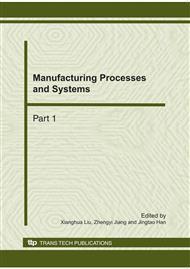p.1458
p.1464
p.1469
p.1473
p.1480
p.1486
p.1491
p.1497
p.1501
Ferroelectric and Piezoelectric Properties of (1-x)BaTi0.8Zr0.2O3-xBa0.7Ca0.3TiO3 Ceramics Prepared by Sol-Gel Technique
Abstract:
The(1-x)BaTi0.8Zr0.2O3-xBa0.7Ca0.3TiO3 ceramics have been prepared by sol-gel technique, where x is from 0.2 to 0.6. It reveals that the dense ceramics can be obtained when the sintered temperature is above 1250°C. It is lower than that of solid state reaction ceramics. In particular, when x=0.3, at which is near the MPB composition, the ferroelectric and piezoelectric properties are more excellent than the others. The maximum dielectric constant is above 9000, which can be observed in the butterfly shape curves of dielectric constant as a function of electric field. The maximum piezoelectric coefficient d33 can reach 400 pm/V, and it is obtained from the piezoelectric response loops.
Info:
Periodical:
Pages:
1480-1485
Citation:
Online since:
October 2010
Authors:
Keywords:
Price:
Сopyright:
© 2011 Trans Tech Publications Ltd. All Rights Reserved
Share:
Citation:


